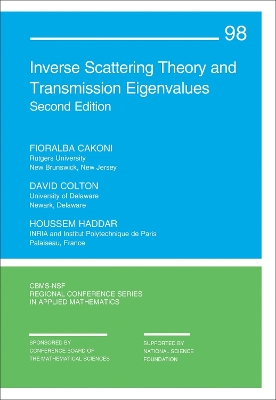Inverse scattering theory is a major theme in applied mathematics, with applications to such diverse areas as medical imaging, geophysical exploration, and nondestructive testing. The inverse scattering problem is both nonlinear and ill-posed, thus presenting challenges in the development of efficient inversion algorithms. A further complication is that anisotropic materials cannot be uniquely determined from given scattering data.
In the first edition of Inverse Scattering Theory and Transmission Eigenvalues, the authors discussed methods for determining the support of inhomogeneous media from measured far field data and the role of transmission eigenvalue problems in the mathematical development of these methods. In this second edition, three new chapters describe recent developments in inverse scattering theory.
In particular, the authors explore the use of modified background media in the nondestructive testing of materials and methods for determining the modified transmission eigenvalues that arise in such applications from measured far field data. They also examine nonscattering wave numbers—a subset of transmission eigenvalues—using techniques taken from the theory of free boundary value problems for elliptic partial differential equations and discuss the dualism of scattering poles and transmission eigenvalues that has led to new methods for the numerical computation of scattering poles.
This book will be of interest to research mathematicians and engineers and physicists working on problems in target identification. It will also be useful to advanced graduate students in many areas of applied mathematics.
- ISBN13 9781611977417
- Publish Date 31 December 2022
- Publish Status Forthcoming
- Publish Country US
- Imprint Society for Industrial & Applied Mathematics,U.S.
- Format Paperback
- Pages 252
- Language English
